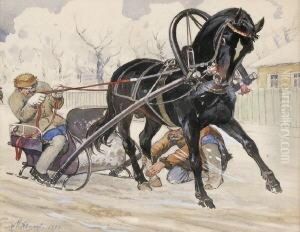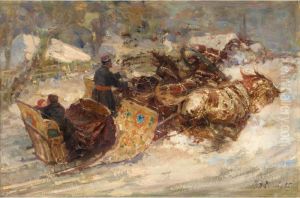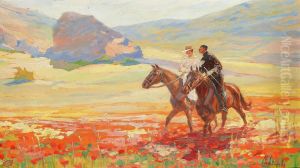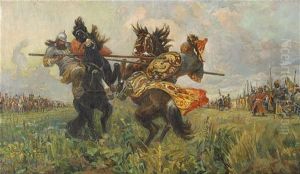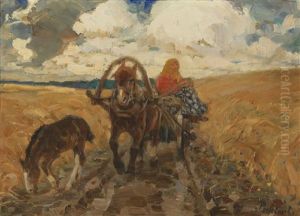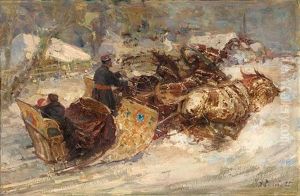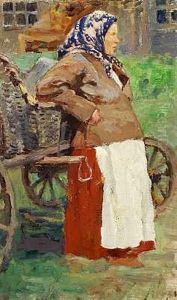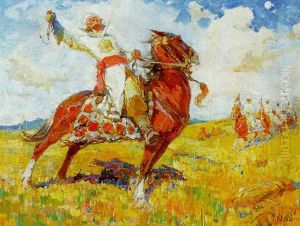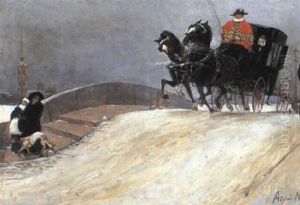Mikhail Ivanovitch Avilov Paintings
Mikhail Ivanovitch Avilov was a prominent Soviet painter and art educator, born on September 6, 1882, in Saint Petersburg, Russian Empire. His work and educational contributions played a significant role in the development of Soviet art, particularly in the realms of historical and battle painting. Avilov's artistic journey was deeply influenced by the changing social and political landscapes of Russia, from the final years of the Russian Empire through the Soviet era.
Avilov received his education at the prestigious Imperial Academy of Arts in Saint Petersburg, where he studied under the guidance of several renowned Russian artists. His education was comprehensive, encompassing both the technical aspects of painting and a deep dive into the historical and cultural contexts that would inform his later works. Avilov graduated with honors, a testament to his skill and dedication to his craft.
Throughout his career, Avilov remained deeply engaged with the themes of Russian history and heroism, often reflecting the ideological underpinnings of the Soviet Union. His works are characterized by their epic scale, intricate detail, and emotional depth. One of his most famous paintings, 'The Defense of Petrograd' (1938), is a vivid portrayal of the historical event during the Russian Civil War, exemplifying his ability to capture the spirit of the Soviet people and their struggles.
Avilov's contributions went beyond his own artworks. He was a respected teacher at the Repin Institute of Arts, where he nurtured the next generation of Soviet artists. His educational methods emphasized not only the technical aspects of painting but also the importance of ideological purity and the role of art in serving the state.
Despite the high esteem in which he was held in the Soviet Union, Avilov's work, like that of many artists of his time, was subject to the shifting winds of political favor and the strictures of Socialist Realism. Nevertheless, his legacy as a master of historical painting and an educator has endured beyond his death on October 14, 1954. Today, Avilov's paintings can be found in major Russian museums, serving as enduring symbols of a pivotal era in Russian history.
